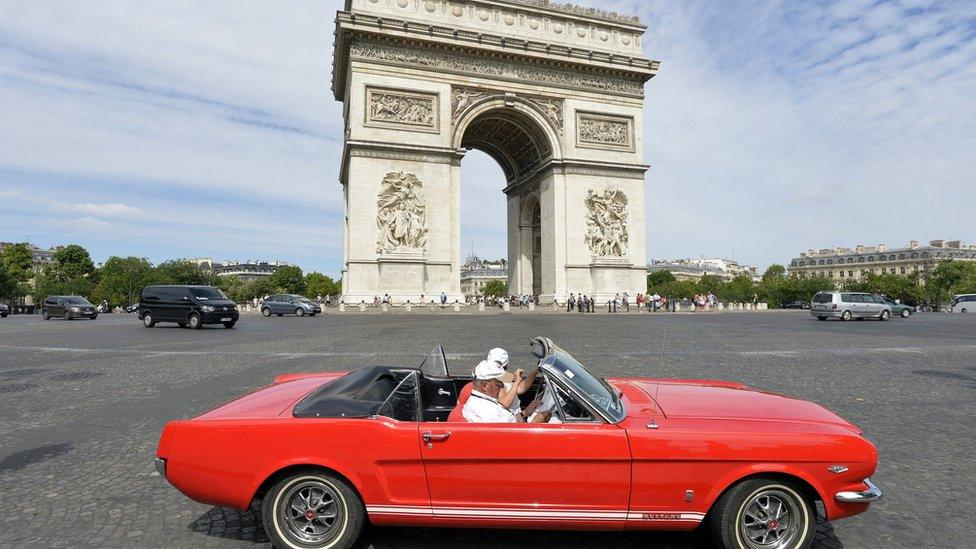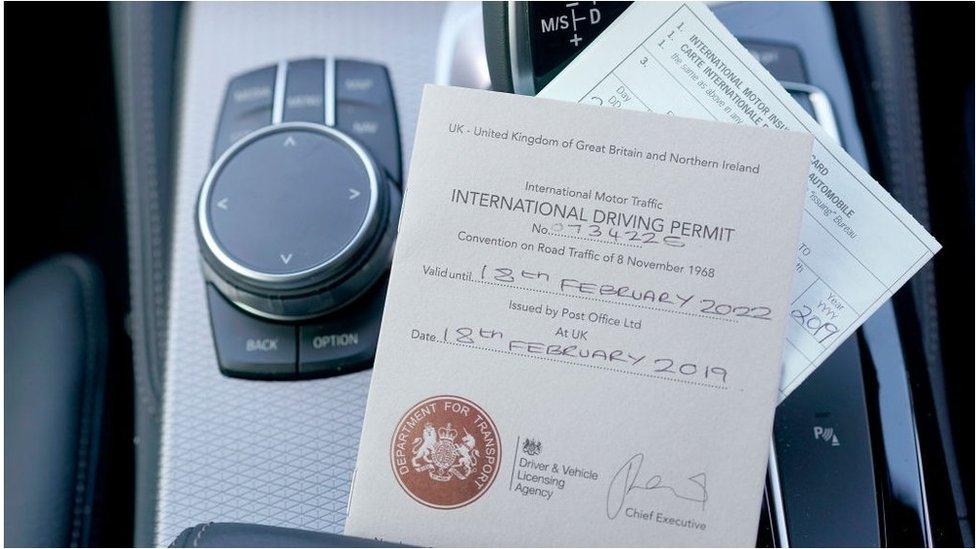Brexit: What are the rules on driving in the EU?
- Published

Being outside the European Union (EU) means changes for people from the UK driving in Europe from the start of 2021.
So how will motorists be affected?
Will my driving licence be valid?
Yes, most UK drivers are still able to use their normal driving licence to drive in EU countries.
There are some exceptions and what is called an International Driving Permit (IDP) may be needed.
An IDP can be bought at Post Offices, external for £5.50.
The exceptions are, external people who only have a paper licence, not a photocard one, as well as those with licences issued in Gibraltar, Guernsey, Jersey or the Isle of Man.
The Driver and Vehicle Licensing Agency (DVLA) told BBC News last year that more than three million people in the UK only had a paper licence.
The government's advice if you are in one of these groups is to check with the embassy of the country you are planning to drive in to see if you will need an IDP. It has also published some guidance, external for specific countries.
There are two different types of IDP you might need in Europe. For France and Germany, for example, some of those people will need a 1968 IDP.
There is also a 1949 IDP, which covers visits to Andorra, for example.
You can find the full list of which IDPs you need worldwide on this page, external.
Even if your UK photocard driving licence has an EU flag on it, it will still be valid in the UK until the expiry date printed on it.

What about insurance?
On 30 June 2021, the European Commission announced that UK motorists would no longer need to show a green card when entering the EU to prove they had insurance.
No exact date has been given for the change, but it should be made in the second half of July.
From that point your normal insurance documents should be enough.
European Commission Vice-President Maroš Šefčovič said this would be "particularly helpful for Northern Irish motorists crossing the border into Ireland".
You should still check with your insurer to find out how much cover you will have in Europe.
Not all policies will give the same level of cover overseas that you have in the UK.
If you are involved in a road traffic accident in an EEA country (that means EU member states plus Iceland, Liechtenstein, Norway, and Switzerland) then you may need to make a claim against the driver or their insurer in the country where the accident happened.
That could involve bringing the claim in the local language.

What about GB stickers?
Until late September, the rules for GB stickers, external are that you need one unless your number plate has GB on it, either alone or alongside a union flag. If the GB is alongside an EU flag or the flag of England, Scotland or Wales then you still need a GB sticker.
For driving in Spain, Cyprus or Malta you need a GB sticker no matter what is on your number plate.
But from 28 September, the sticker needed will be changing from GB to UK, at which point you will need a sticker to drive abroad even if you have GB on your number plate.
You also need to carry your V5C log book, external with you if you own the car.
If it is a car you have hired or leased, then you will need to get a VE103 form to show you have permission to take it out of the UK.


